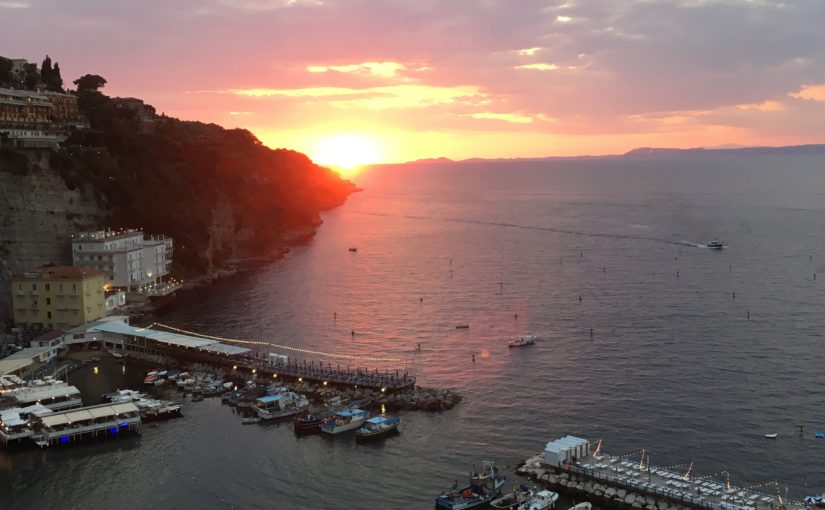Dear reader–
Last week, wanting more opportunities to practice my Italian, I asked the program director for advice. She had the perfect solution. She introduced me to an Italian woman who is taking English classes at Sant’Anna and who has been wanting an opportunity to practice her English. We have started meeting on a semi-regular basis just to talk, she in English and I in Italian, to help each other learn. This woman is not only a patient listener and good teacher, but also a very kind and interesting person. I could not have wished for a better opportunity to practice my Italian.
So, as you can see, I have made progress at finding more ways to immerse myself in the Italian language. Other small opportunities have also come along–for example, the chance to serve as an impromptu interpreter between my American peers and Italian shop owners. I’m still speaking more English than I would like, but the progress of this past week encourages me to keep forging ahead. Every unknown word in my literature classes reminds me that I still have a long way to go.
Meanwhile, Sorrento has begun to feel more and more familiar. It is a very small city, and everything is within 10-15 minutes walking distance. It has one large main street lined with shops and bars and cafes, as well as many narrow side streets. Pedestrians, motorscooters, and compact cars all vie for primacy at such close quarters as would give nightmares to the head of the American Traffic Safety Services Association (though I have not yet seen any accidents). There are many alleys, for example, that I would judge to be big enough for only one car at a time. The Italian drivers, apparently, do not agree with my judgement, since they use any old road as a two-lane speedway.
Even with the narrow streets and crowds of tourists, Sorrento is far from being an overwhelmingly busy city like New York or Rome. The residents describe it as “calm”, especially compared to other tourist hot-spots. I saw the truth of this when I visited the island of Capri last weekend. Capri is the place where the Kardashians and LeBron James vacation, which gives you some idea of both its popularity and its beauty.
There are several towns on the island of Capri: Anacapri (a more residential town, accessible only by a steep winding road), Marina Grande (the port), and Capri proper (which is filled with breathtaking clothes, breathtaking jewelry, and breathtaking prices). I visited all three of these towns, as well as the top of Monte Solaro, which provided panoramic views of the island and ocean.
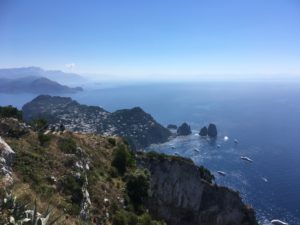
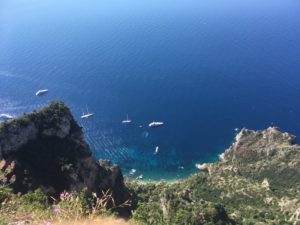
I also took a boat tour around the island, which sits on massive grey limestone cliffs above the bluest water I have ever seen.
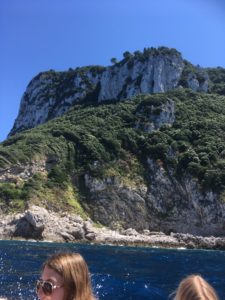
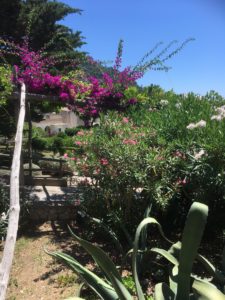
Small wonder that the richest of the rich want to visit here–as does everybody else, apparently. During tourist season (that is, now), Capri has 1200-1500 visitors every day. The crowds were intense, especially in the town of Capri proper. After a long day on Capri, Sorrento felt positively homey.
Sorrento, however, is not immune to the “tourist bug”. Every hundred yards or so on Sorrento’s main street, there is a shop overflowing with lemon paraphernalia.
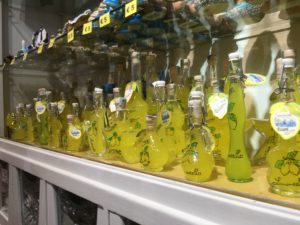
You see, lemons are quite abundant in southern Italy, and have become so popular that they are almost synonymous with the region.
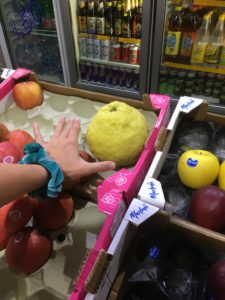
These stores are essentially capitalizing on the natural attractions of Sorrento. Capri does the same. In fact, every tourist city does it. It’s how the money gets made.
This aspect of living in Italy–namely, trying to bottle it up and sell it–rubs me the wrong way. I feel like I’m being denied “real Italy”. However, I had an important realization this week. Tourism is a big part of “real Italy”. When I live in a tourist hub like Sorrento, I’m actually experiencing a substantial part of the modern Italian economy. My experience in Italy looks nothing like Italy of movies and novels; but then again, why should it?
This example brings me to what is perhaps the biggest theme of my trip so far: adjusting my expectations. I expected to be speaking Italian almost constantly. Now, I find that I have to search out opportunities to speak with Italians. I expected to be immersed in “real Italian life”. I am, but it looks very different than what I anticipated. The fact remains that Italy is a real place with real people, and I want to learn about their reality. That means getting over my expectations and learning to experience Italy as it really is.
I will keep searching for ways to dive into the language and culture here, and I will continue to keep you posted on my progress.
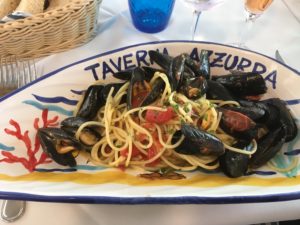
Until next time,
Beatrice
